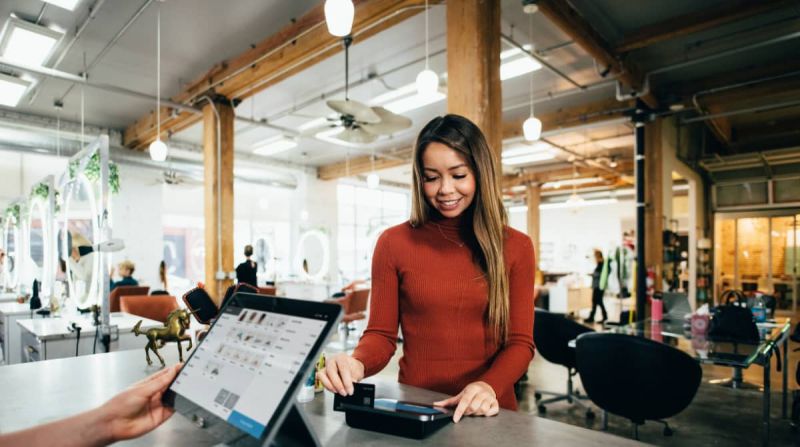How innovative technology serves the retailer: A store sales cycle model
As a result of online competition and changing consumer behavior, retailers' turnover is uncertain and profit margins are often low. At the same time, the range of retail solutions that aim to get more visitors into the physical store is growing. In this regard, it is mainly innovative technologies such as mobile loyalty apps, digital dress mirrors and augmented reality applications that promise the retailer better. The big question, however, is how these technologies can best be deployed and whether they really deliver to retailers.

The Innovative Retail Technology expert group of research platform ShoppingTomorrow is keen to help retailers gain insight into the effectiveness of innovative technology. They do this via the so-called store sales cycle model. This model provides insight into the role of various types of innovative technologies during the phases of the retailer's sales process.
Starting point: technology supports the customer
The importance of supporting the customer has been recognized by retailers for many years. The customer journey is often taken as the starting point. Driven by the possibilities that the (new) web-based technology offers, a webstore can be seen as a web-based customer decision support system (O'Keefe & McEachern, 1998). From this perspective, the goal of a webstore is to provide decision support during all phases of the decision-making process. This creates a conversion tunnel in which supporting the decision-making process with web-based technology is key. But technology can also offer a solution to irritations during store visits. Think of technologies such as self-checkout systems to eliminate long queues at the checkout. By seeing the store as a sales decision support system, a relatively complete picture of the use and value of innovative technology is created.
The store sales cycle model
The starting point for the model was the so-called customer service life cycle model of Blake Ives and associates (Ives & Learmonth, 1984; Ives & Mason, 1990; Piccolo, Spalding & Ives, 2001). This B2B model shows that with the help of information technology, sellers can effectively guide customers through the ordering process. This model has been translated into a retail setting, with the emphasis on the sales process and the technology that provides sales decision support. The expert group has called this the store sales cycle model.

The aim of the model is to offer retailers and technology parties a framework for mapping out and discussing the use of innovative technology. The prepared phases are as follows:
- Reach: Reach the customer to bring attention to the store and / or its products.
- Understand: Understand the customer and his needs to further finetune the sales process.
- Inspire: Inspire the customer by letting them experience the store and / or its products.
- Inform: Providing the correct type, quantity and quality product information.
- Convert: Encourage and facilitate the customer to make a purchase.
- Care: Taking care of the customer after the purchase has been made, including delivery and instructions for using the product.
- Expand: Continuing the relationship with the existing customer and / or promoting the store and / or its products based on positive customer experiences.
Various innovative technologies can be used to shape or support the phases. This technology is included in the outer shell of the store sales cycle model. This is not so much about the technology itself, but rather about the instrumental support that technology offers at one or more stages of the sales process. The expert group also comes with an in-depth bluepaper to describe more examples and cases. You can download this blue paper from the ShoppingTomorrow website.
This expert group was made possible in part by various Dutch organizations and industry associations: CMI HvA, Amsterdam University, info.nl, IN Retail, KVK, Tuinbranche Nederland, Retail Agenda and Uneto-Vni.